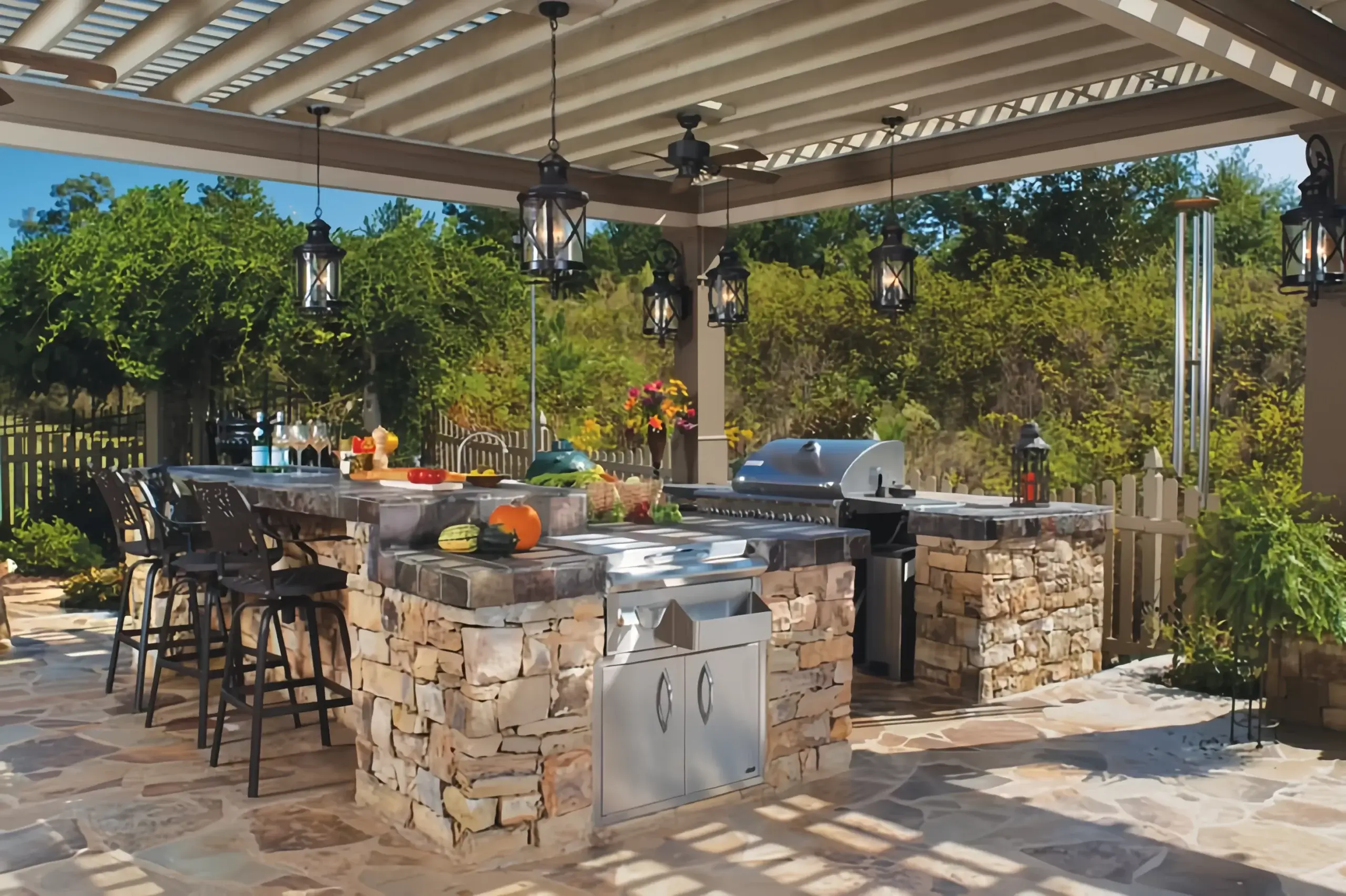In the realm of outdoor living, where the beauty of nature meets the joy of cooking, small outdoor kitchen ideas have become a cornerstone of modern lifestyles. As homeowners seek to maximize their outdoor spaces, the allure of crafting an intimate culinary oasis right outside your door is irresistible. Imagine sizzling aromas wafting through the air as you whip up delectable dishes under the open sky, surrounded by the company of friends and family. In this blog post, we’re diving into the world of creative small outdoor kitchen ideas—a journey that promises to transform your outdoor space into a stylish and functional haven for culinary adventures. So, let’s fire up the grill and begin this exciting exploration of small outdoor kitchen possibilities!
Planning and Design
Efficient planning and thoughtful design are the cornerstones of creating a functional and inviting small outdoor kitchen that maximizes your outdoor living space. When embarking on the journey of designing a small outdoor kitchen, several crucial factors come into play to ensure both practicality and aesthetic appeal.
Evaluate Your Space
Start by assessing the available space for your outdoor kitchen. Measure the area accurately and take note of any existing features like landscaping, pathways, or architectural elements. This assessment will provide a clear picture of how much room you have to work with and help you make informed decisions about the layout and design.
Set a Realistic Budget
Before diving into the design process, establish a budget that aligns with your financial resources and goals. Your budget will guide your choices in terms of materials, appliances, and overall complexity. By setting clear financial boundaries, you can avoid overspending and ensure that your small outdoor kitchen remains a feasible project.
Determine Functionality
Consider how you intend to use your outdoor kitchen. Are you primarily interested in grilling and entertaining, or do you need a space for prep work and cooking as well? Understanding your specific needs will help you prioritize appliances and features that enhance your cooking experience.
Optimize Layout
The layout of your small outdoor kitchen is pivotal in making the most of the available space. There are several layout options to consider, each with its own advantages:
- L-Shaped Layout: Ideal for corner spaces, this layout provides separate zones for cooking, prep, and seating.
- U-Shaped Layout: Offers a more enclosed cooking area with ample countertop space for food prep and serving.
- Galley-Style Layout: Suited for narrow spaces, this layout places appliances and workspace in a linear arrangement.
Blend with Landscape and Architecture
Harmonize your outdoor kitchen design with the existing landscape and architectural style of your home. This integration creates a seamless transition between indoor and outdoor spaces, resulting in a visually appealing and cohesive aesthetic.
Layout and Configuration
Choosing the right layout and configuration for your small outdoor kitchen is pivotal to ensure smooth workflow, efficient use of space, and a comfortable cooking environment. Each layout has its own advantages, so let’s explore some options that can help you make the most of your limited outdoor space.
L-Shaped Layout
The L-shaped layout is a popular choice for small outdoor kitchens as it maximizes corner spaces while providing distinct zones for cooking, prep, and socializing. This layout encourages a natural flow of movement and can accommodate multiple people at once.
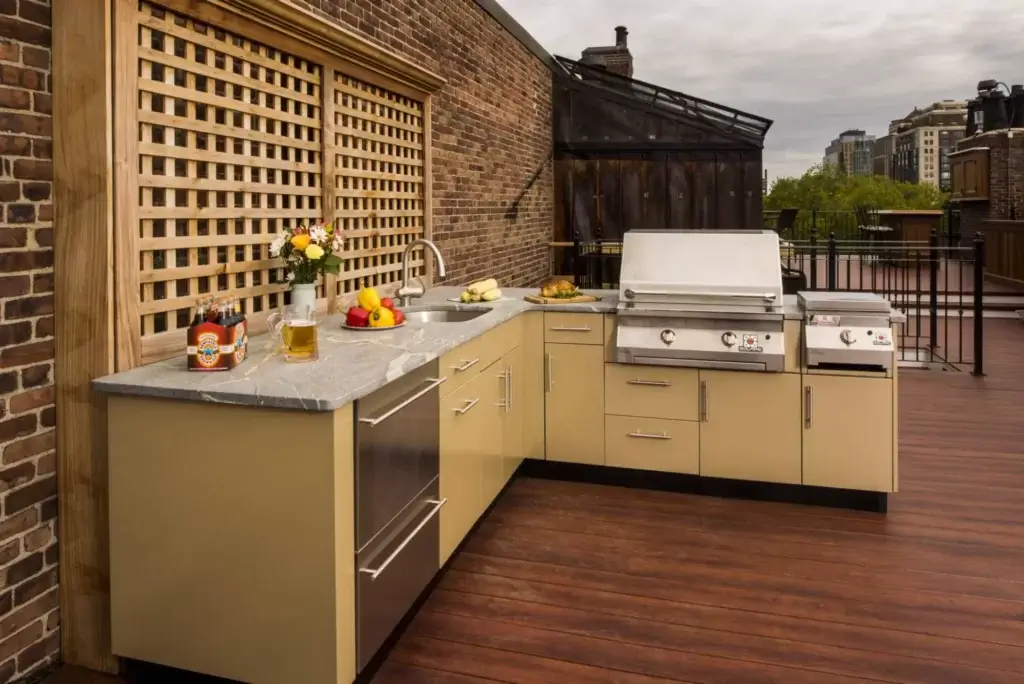
Advantages:
- Efficient use of corners and corners spaces.
- Clearly defined work zones.
- Ample counter space for food preparation.
- Easy interaction between the cook and guests.
U-Shaped Layout
The U-shaped layout offers a more enclosed cooking area, making it an excellent choice if you desire a more secluded cooking environment. It provides generous counter space and facilitates an organized workflow.
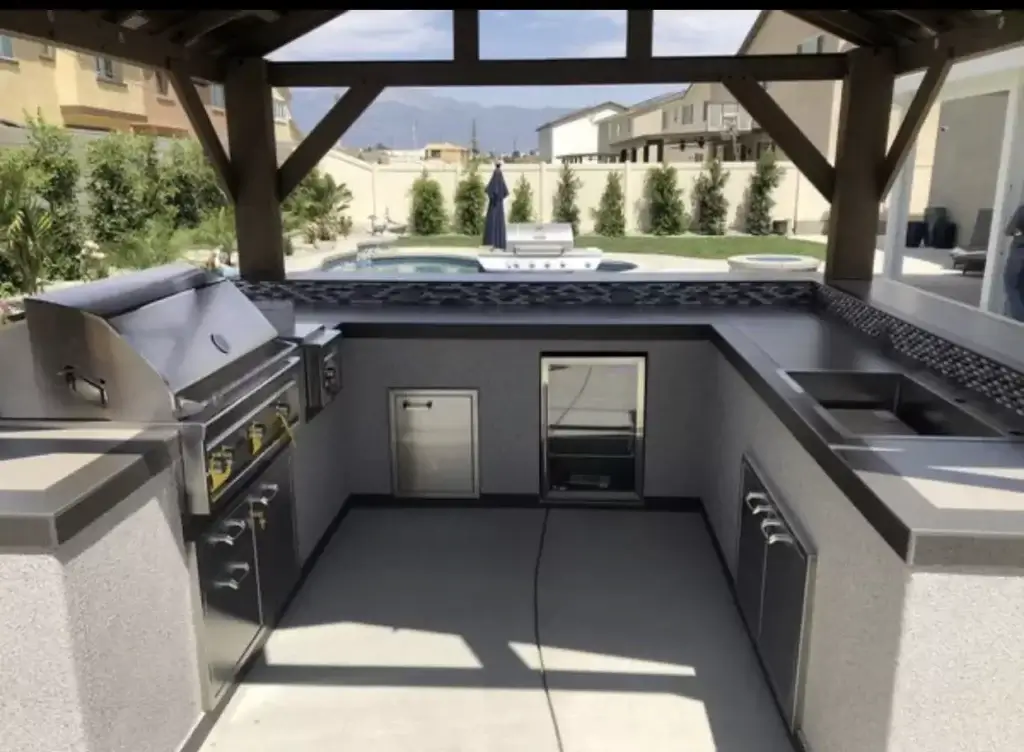
Advantages:
- Abundant countertop space for multiple tasks.
- Enclosed feel provides a designated cooking zone.
- Easy access to all appliances and work areas.
- Opportunity to incorporate a bar counter for seating.
Galley-Style Layout
The galley-style layout is suitable for narrow spaces and is characterized by a linear arrangement of appliances and work areas. While it may have a more compact feel, it ensures efficient use of available space.
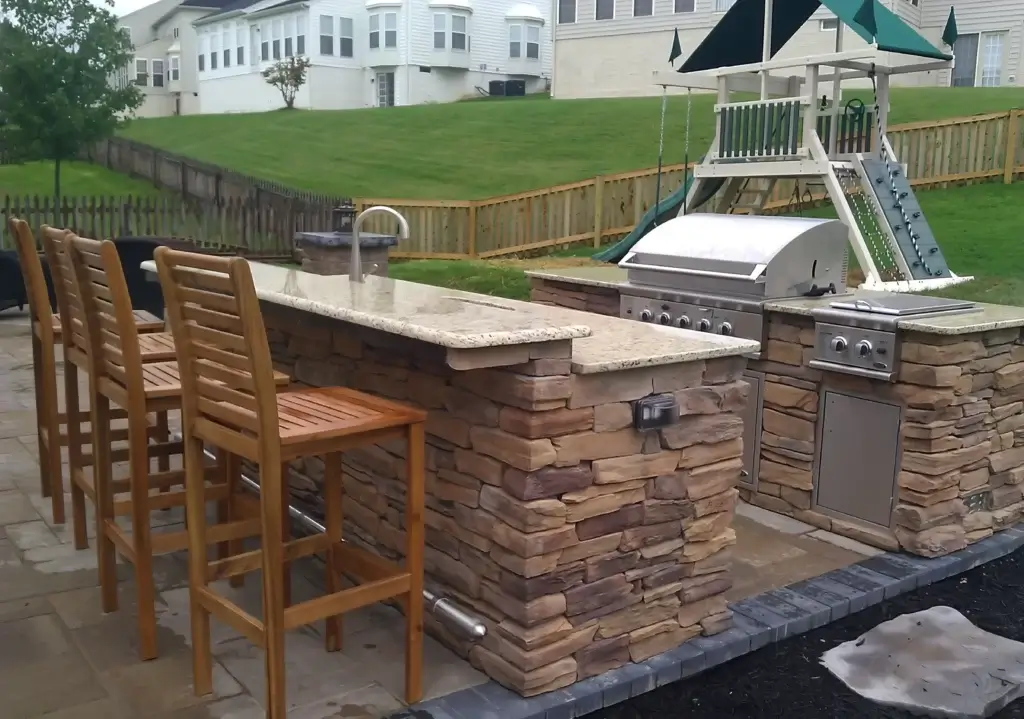
Advantages:
- Ideal for small and narrow outdoor areas.
- Linear layout optimizes workflow in a compact space.
- Simplistic design promotes functionality and efficiency.
- Great for individuals who prefer a minimalistic approach.
Open-Air Island Layout
If you have a larger outdoor space, consider an open-air island layout. This design places the cooking area at the center, surrounded by countertop space for prep and serving, creating a focal point for social interaction.
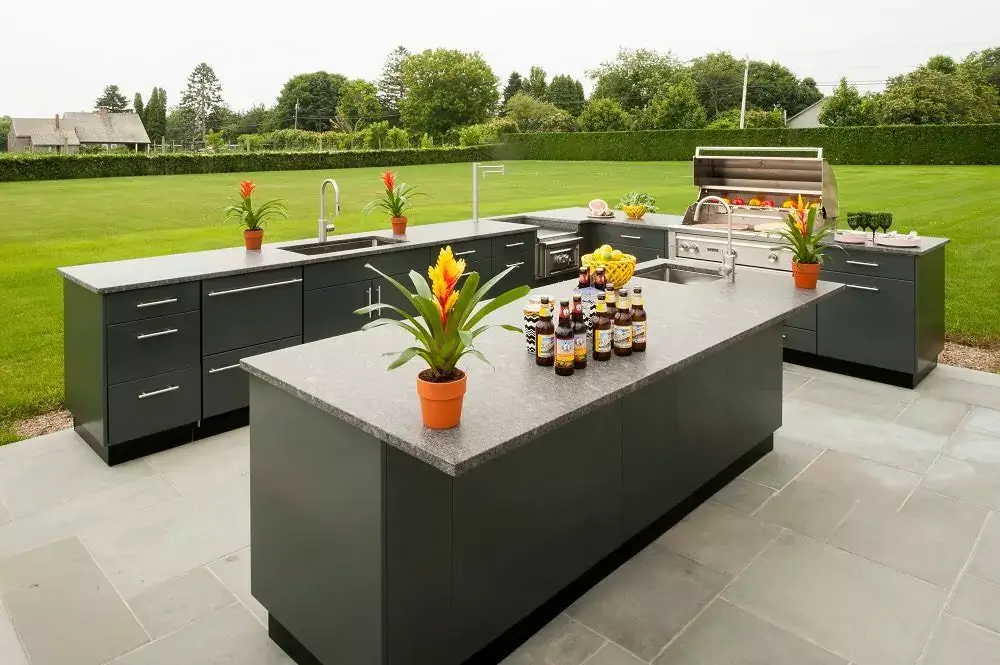
Advantages:
- Promotes a central gathering point for socializing.
- Expansive countertop area for prep, cooking, and serving.
- Enhances the aesthetic appeal of the outdoor space.
- Encourages interaction between the cook and guests.
Custom Hybrid Layout
Don’t be afraid to get creative and customize a hybrid layout that suits your unique needs. You can combine elements of different layouts to design a functional and tailored outdoor kitchen.
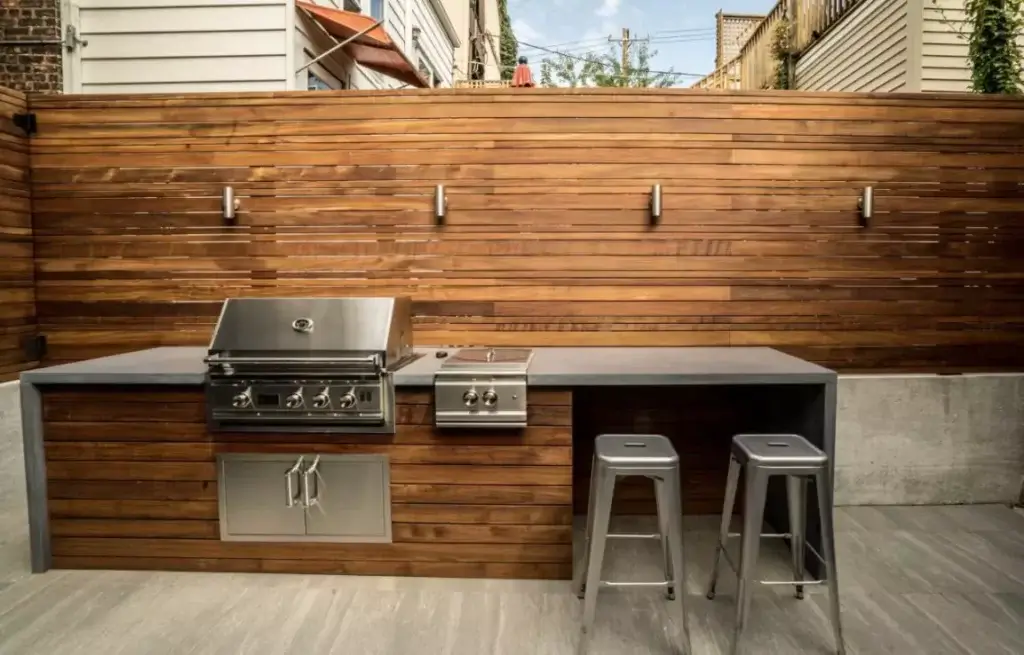
Advantages:
- Allows for a personalized layout that meets specific requirements.
- Provides an opportunity to incorporate unique design features.
- Adaptable to the available space and individual preferences.
- Can optimize the outdoor kitchen for your cooking style.
Essential Appliances and Features
When designing a small outdoor kitchen, choosing the right appliances and features is paramount to ensure that your space is both functional and enjoyable. These essential elements will be the backbone of your outdoor cooking and dining experience, so let’s delve into the key components you should consider incorporating.
Grill
A grill is the heart of any outdoor kitchen. Opt for a compact yet high-quality grill that suits your cooking style, whether it’s gas, charcoal, or electric. Consider built-in options to save space and provide a seamless look.
Sink
Integrate a sink into your outdoor kitchen for convenient food preparation and cleanup. A sink with running water is essential for tasks like washing fruits, vegetables, and utensils without having to constantly go indoors.
Refrigerator
Including a refrigerator allows you to store ingredients, beverages, and marinated items without frequent trips to the indoor kitchen. Choose a compact and weather-resistant model that fits well within your space.
Storage Cabinets
Effective storage solutions are vital in a small outdoor kitchen. Cabinets and drawers provide space to keep cooking utensils, cutlery, spices, and more. Optimize vertical space with tall cabinets or shelves to make the most of limited room.
Countertop Space
Ample countertop space is essential for food prep, plating, and serving. Ensure your outdoor kitchen has sufficient counter area adjacent to the grill and sink, as well as extra space for guests to gather around.
Seating
Incorporate comfortable seating options to create a welcoming atmosphere for dining and socializing. Consider barstools at a counter, a small dining table, or even built-in seating around the kitchen area.
Lighting
Proper lighting enhances the functionality and ambiance of your outdoor kitchen, especially during evening gatherings. Install task lighting above the grill and work areas, as well as ambient lighting to create a cozy environment.
Shade and Shelter
Shield your outdoor kitchen from the elements with shade solutions like umbrellas, pergolas, or retractable awnings. This ensures that you can enjoy cooking and dining even in varying weather conditions.
Food Prep Area
Apart from the main cooking space, designate an area for food prep with a convenient workspace. This can be an extension of the countertop or a fold-down surface that saves space when not in use.
Material Selection
Choosing the right materials for your small outdoor kitchen is essential for creating a durable, weather-resistant, and visually appealing space that withstands the elements and the test of time. Let’s explore the materials you should consider for various components of your outdoor kitchen.
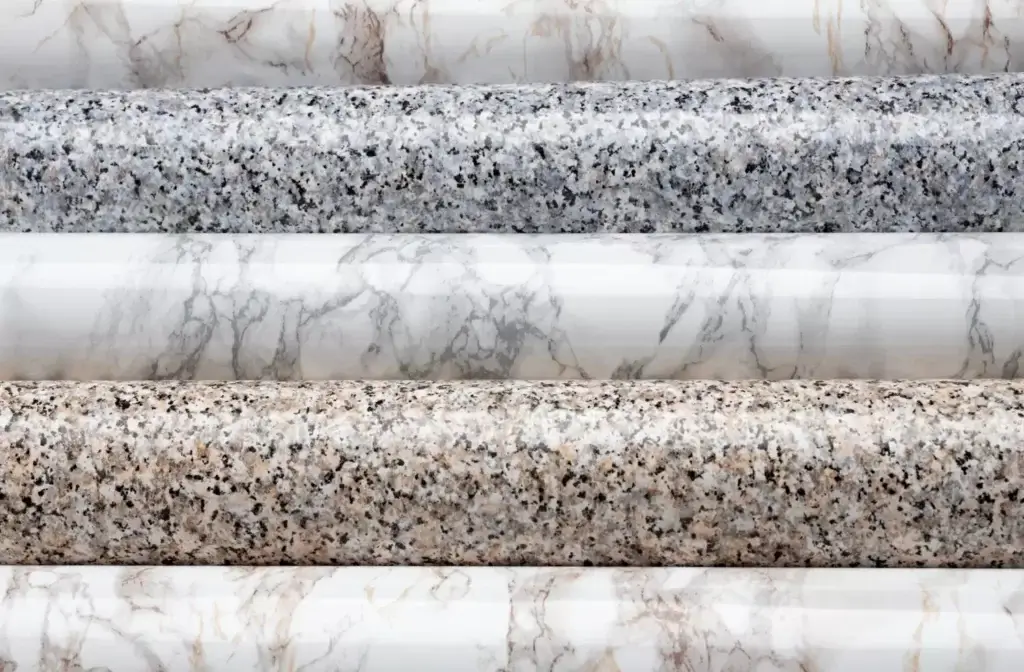
Countertops
Opt for durable and weather-resistant materials for your countertops. Popular options include:
- Granite: Known for its durability and natural beauty, granite withstands heat, scratches, and outdoor conditions.
- Concrete: Versatile and customizable, concrete countertops can be molded into various shapes and styles.
- Tile: Porcelain or natural stone tiles are resistant to heat and moisture, creating a visually appealing surface.
Cabinetry
Choose materials that can withstand outdoor exposure and provide ample storage:
- Stainless Steel: Sleek and durable, stainless steel cabinets are resistant to rust and easy to clean.
- Marine-Grade Polymer: This waterproof material is ideal for outdoor cabinets due to its resistance to moisture and harsh weather.
- Teak Wood: For a natural and rustic look, teak is a durable hardwood that ages well outdoors.
Flooring
Select a flooring material that is slip-resistant, durable, and easy to clean:
- Concrete: Sturdy and versatile, stained or stamped concrete is a popular choice for outdoor kitchen floors.
- Porcelain Tiles: These tiles mimic the appearance of natural stone and are resistant to staining, fading, and moisture.
- Natural Stone: Options like slate or travertine provide an elegant and timeless look, although they may require sealing.
Backsplash
Your choice of backsplash material should complement the countertops and cabinetry:
- Glass Tiles: Reflective and easy to clean, glass tiles add a touch of modern sophistication.
- Natural Stone: Similar to the countertops, using the same material for the backsplash creates a cohesive look.
- Stainless Steel: For an industrial vibe, stainless steel backsplashes are durable and low-maintenance.
Shelter and Shade
When considering materials for shade structures, think about durability and aesthetics:
- Wood: Wooden pergolas or pavilions offer a classic and natural look. Opt for weather-resistant woods like cedar or redwood.
- Metal: Steel or aluminum structures are strong and can be coated for weather protection.
- Fabric: Retractable awnings or fabric shade sails can provide flexible shade options and add a pop of color.
Creative Design Ideas
Elevate the style and ambiance of your small outdoor kitchen by infusing it with creative design concepts. Whether you prefer a rustic, modern, coastal, or Mediterranean look, there are various design themes that can transform your space into an inviting and visually appealing outdoor haven.
Rustic Charm
Capture the cozy and inviting atmosphere of a rustic cabin by incorporating natural materials and warm colors:
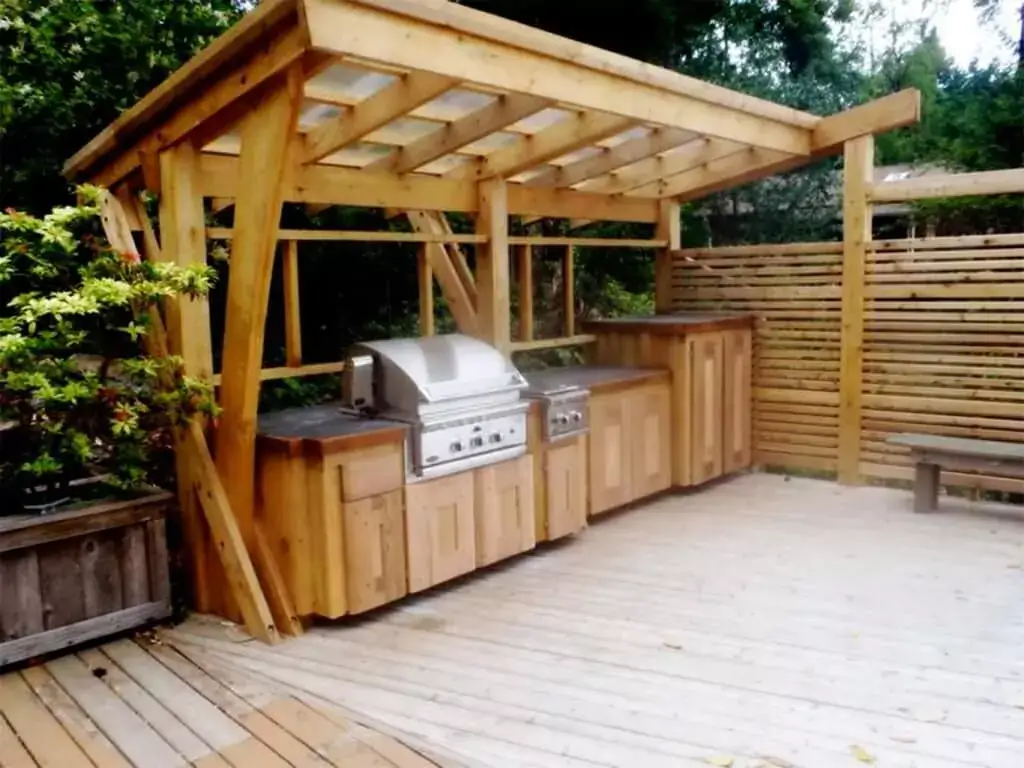
- Materials: Choose distressed wood for cabinetry and furniture, complemented by stone or brick accents.
- Color Palette: Opt for earthy tones such as warm browns, muted greens, and rustic reds.
- Accessories: Add vintage lanterns, wrought iron fixtures, and cozy textiles like outdoor rugs and cushions.
Modern Minimalism
Achieve a sleek and streamlined look with modern design principles that emphasize clean lines and minimalistic aesthetics:
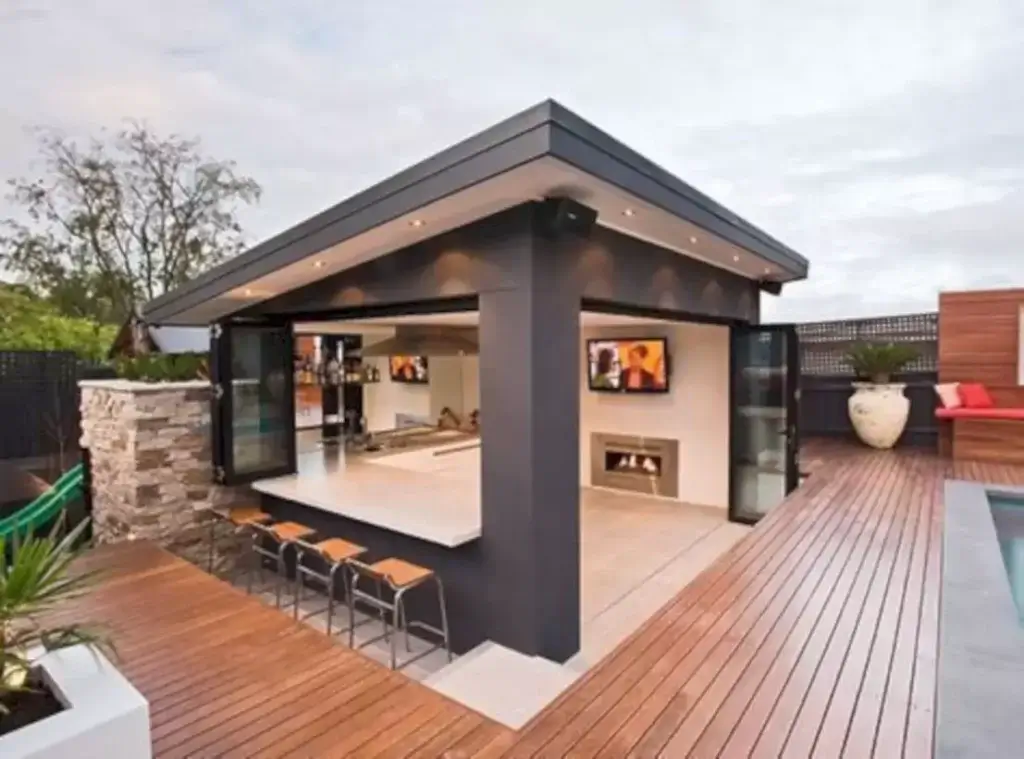
- Materials: Use stainless steel, concrete, and glass to create a sleek and uncluttered appearance.
- Color Palette: Stick to a neutral palette with whites, blacks, grays, and occasional pops of bold colors.
- Furniture: Choose sleek and minimalist furniture pieces with smooth surfaces and geometric shapes.
Coastal Retreat
Transport the breezy and relaxed feel of the coast to your outdoor kitchen space with nautical and beach-inspired elements:
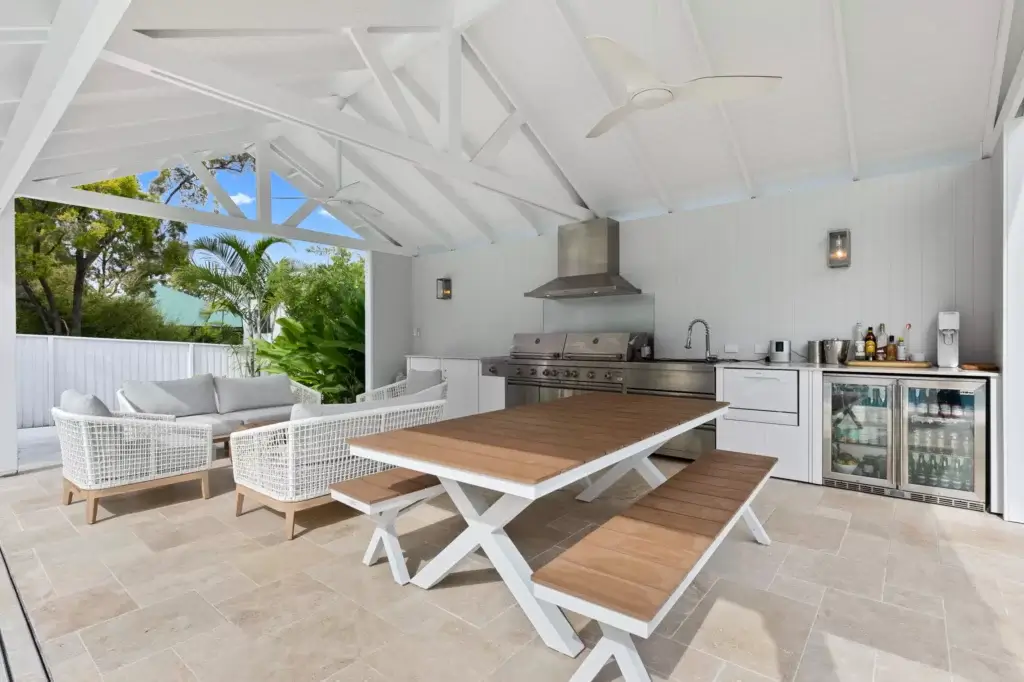
- Materials: Incorporate light-colored woods, wicker, and marine-grade materials for furniture and cabinetry.
- Color Palette: Opt for soothing shades of blues, whites, and sandy neutrals.
- Decor: Integrate beach-themed accessories like driftwood decor, seashell accents, and coastal textiles.
Mediterranean Elegance
Embrace the timeless allure of the Mediterranean with its rich textures, vibrant colors, and Old World charm:
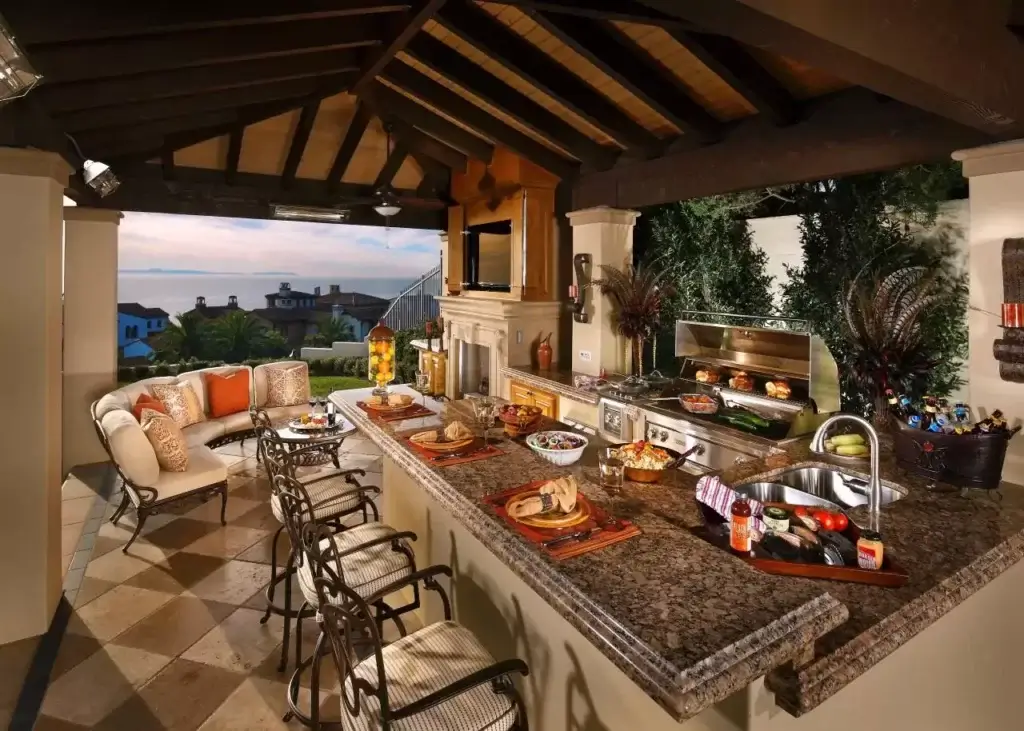
- Materials: Choose terra cotta tiles, stucco finishes, and wrought iron accents.
- Color Palette: Incorporate warm, earthy tones like terracotta, olive green, and deep blues.
- Accessories: Enhance the atmosphere with mosaic tiles, lanterns, and lush potted plants.
Contemporary Fusion
Combine elements from different design styles to create a unique and personalized outdoor kitchen that reflects your individual taste:
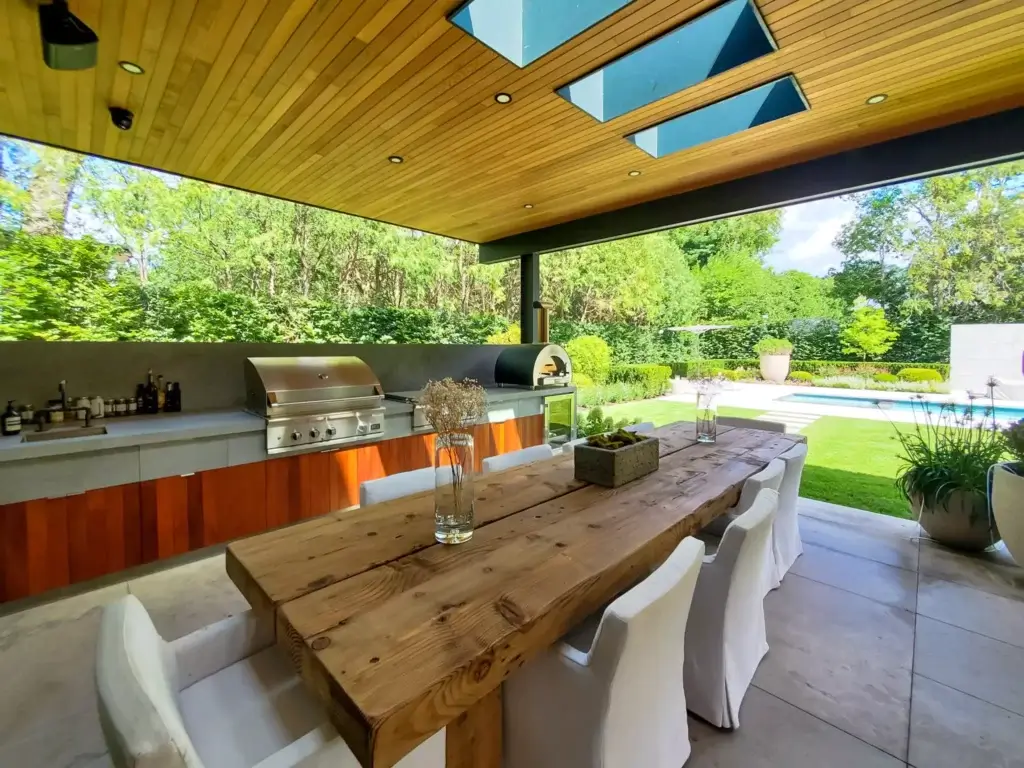
- Materials: Mix and match materials like wood, metal, and stone for a curated and eclectic look.
- Color Palette: Experiment with a diverse range of colors that harmonize with each other.
- Furniture: Blend contemporary and traditional pieces for an eclectic and comfortable setting.
DIY vs. Professional Installation
As you embark on the journey of creating your small outdoor kitchen, an important decision to make is whether to take on the project as a do-it-yourself (DIY) endeavor or seek professional help. Each approach has its advantages and considerations, so let’s explore both options to help you make an informed choice.

DIY Installation
Advantages:
- Cost Savings: DIY projects often come with lower upfront costs since you won’t be paying for professional labor.
- Personal Satisfaction: Successfully completing a DIY project can be incredibly rewarding and boost your confidence.
- Customization: You have complete control over every aspect of the design and construction.
- Learning Opportunity: DIY projects provide a chance to learn new skills and gain valuable experience.
Considerations:
- Skill Level: Assess your own skills and experience in construction, carpentry, plumbing, and electrical work.
- Time Commitment: DIY projects can be time-consuming, and the learning curve may extend the timeline.
- Potential Challenges: Without professional guidance, you might encounter unexpected challenges that can be difficult to resolve.
Professional Installation
Advantages:
- Expertise: Professionals bring specialized knowledge and experience to ensure proper construction and installation.
- Time Efficiency: Hiring experts can significantly speed up the project timeline.
- Quality Assurance: Professional work is more likely to meet industry standards and provide lasting results.
- Problem Solving: Professionals are equipped to handle unexpected issues that may arise during construction.
Considerations:
- Cost: Hiring professionals generally involves higher upfront costs due to labor and expertise.
- Limited Customization: While professionals can implement your ideas, there might be some limitations in terms of customization.
- Communication: Clear communication is key to ensuring your vision is accurately executed by professionals.
Making the Choice:
DIY: If you have the necessary skills, time, and enthusiasm, a DIY approach can be a gratifying way to create a space tailored to your preferences. However, be prepared to invest substantial effort and patience, especially if you’re new to construction projects.
Professional Installation: If you prioritize a quicker timeline, higher quality, and a smoother process, hiring professionals is a wise choice. They can bring your vision to life efficiently while ensuring compliance with codes and standards.
Maintenance and Seasonal Care
Once you’ve created your dream small outdoor kitchen, it’s important to prioritize regular maintenance and seasonal care to ensure its longevity and optimal performance. Proper upkeep will preserve the functionality and aesthetic appeal of your outdoor cooking space for years to come.
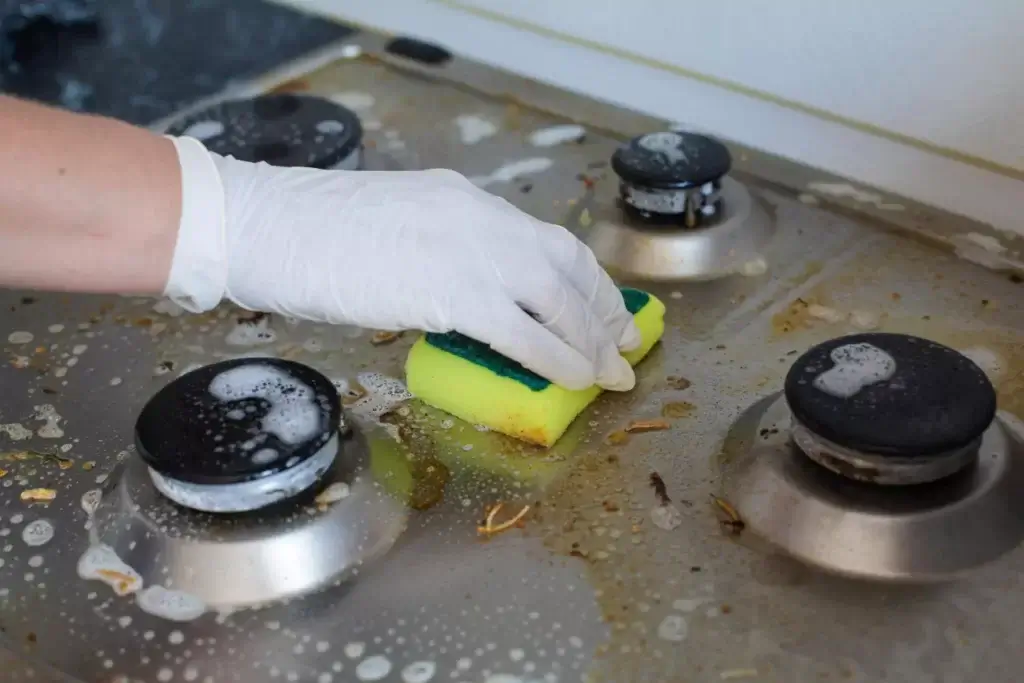
Regular Cleaning
Advantages:
- Prevent Wear and Tear: Regular cleaning helps prevent buildup of dirt, grease, and stains that can damage surfaces.
- Maintain Hygiene: Keeping your outdoor kitchen clean ensures safe food preparation and a sanitary environment.
- Extend Lifespan: Clean surfaces and appliances are less likely to deteriorate or require frequent repairs.
Cleaning Tips:
- Countertops: Wipe down countertops after use with a mild soap solution. Avoid abrasive cleaners that might damage surfaces.
- Grill: Scrub the grill grates with a wire brush after each use and clean the interior periodically to prevent grease buildup.
- Sink and Fixtures: Keep the sink clean and clear of debris to prevent clogs and maintain proper drainage.
- Cabinets and Furniture: Regularly wipe down cabinets and furniture to remove dust, pollen, and other outdoor elements.
Seasonal Maintenance
Advantages:
- Weather Protection: Seasonal maintenance prepares your outdoor kitchen for changing weather conditions.
- Prevent Rust and Corrosion: Applying protective coatings can prevent rust on metal surfaces due to exposure to moisture.
- Address Wear: Regular inspections allow you to identify and address any wear and tear before it becomes a bigger issue.
Seasonal Tips:
- Spring: Inspect and clean all surfaces, check for any damage caused by winter weather, and apply protective coatings as needed.
- Summer: Monitor and clean more frequently due to increased use. Check for signs of rust on metal components.
- Fall: Clean and prepare for colder weather. Store any removable components that might be affected by freezing temperatures.
- Winter: Cover or protect your outdoor kitchen if it’s not in use during the winter months.
Storage and Covering
Advantages:
- Extended Lifespan: Storing or covering your outdoor kitchen during harsh weather helps protect it from extreme conditions.
- Reduced Maintenance: Covering appliances and furniture prevents debris buildup, reducing the frequency of cleaning.
Storage and Covering Tips:
- Use Covers: Invest in high-quality covers specifically designed for outdoor kitchen appliances and furniture.
- Remove Propane Tanks: If you have a gas grill, disconnect and store propane tanks in a well-ventilated area.
- Store Removable Components: During the offseason or when not in use, consider storing removable components indoors to prevent wear.
Conclusion
Designing and creating a small outdoor kitchen is a fulfilling endeavor that enhances your outdoor living experience and adds value to your home. By following the steps outlined in this blog post, from meticulous planning and innovative design ideas to essential appliance selection and thoughtful material choices, you’re well on your way to transforming your outdoor space into a culinary haven.
Remember that your outdoor kitchen’s success hinges on a balance between functionality and aesthetics. Whether you’re drawn to the charm of rustic design, the sleekness of modern minimalism, the tranquility of a coastal retreat, the elegance of the Mediterranean, or a fusion of styles, your chosen theme will shape the atmosphere and ambiance of your outdoor space.
As you consider whether to embark on a DIY adventure or enlist the expertise of professionals, remember that each approach offers its own set of benefits. A DIY project allows for customization and personal satisfaction, while professional installation ensures efficiency and quality craftsmanship.
To maintain the allure of your outdoor kitchen throughout the seasons, prioritize regular cleaning, implement seasonal maintenance routines, and invest in protective measures like covers. This dedication to upkeep will safeguard your investment and keep your outdoor kitchen looking and functioning at its best.
In the end, your small outdoor kitchen is a reflection of your lifestyle and culinary aspirations. Whether you’re grilling up a family feast or hosting an intimate dinner party, your outdoor kitchen will be the heart of your outdoor living space—a place where memories are made, flavors are savored, and connections are forged.
